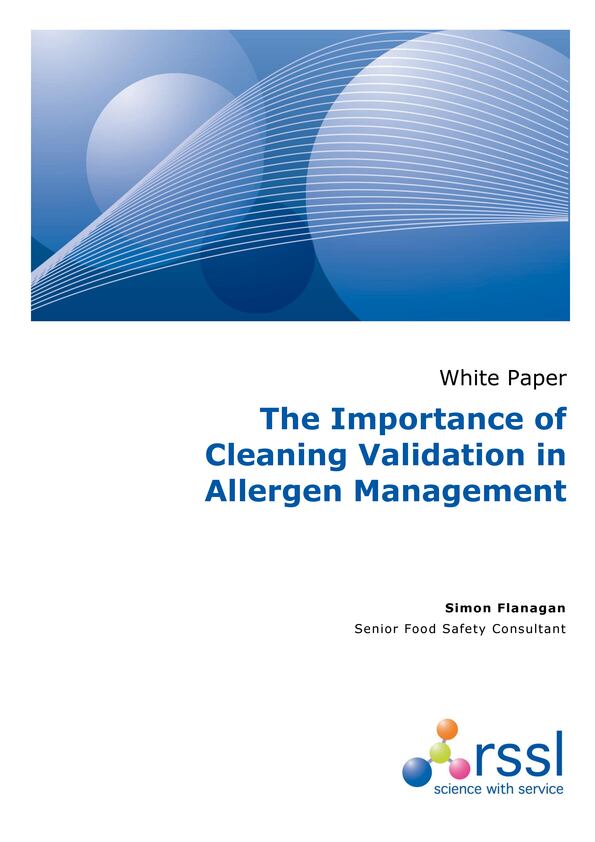The meaning of shelf-life
Under current UK and European regulations, pre-packaged food must be labelled with a shelf-life. This declaration can be in the form of either a “Use by” date - the date up to which a product is considered safe to eat when stored according to the specified conditions, or a “Best before” date - indicating the point at which product quality and consumer expectations could be compromised.
In both cases, generating robust data to evaluate and support the final declaration is vital. Any deterioration in the taste, texture, aroma, appearance or any other product characteristic such as active content within shelf-life risks losing hard-won consumer trust. It may also undermine the success of the product launch and damage brand reputation.
Carrying out detailed shelf-life studies on the final product is essential, but there’s much that can be done in advance. In fact, the best strategies build shelf-life requirements into the very early stages to avoid unwanted surprises further down the line. After all, there’s little value in perfecting a concept in the development kitchen, only to find it doesn’t have the stability you need after scale-up.
So what does this look like in practice?
Early intervention
Shelf-life is affected by many different factors. The type and quality of ingredients used in the formulation, product pH, water activity, manufacturing process and packaging format can all have an impact. So, by looking at all of these elements in the context of the product brief, RSSL’s expert team can highlight any areas that may challenge shelf-life requirements.
Reducing sugar or salt content, for example, may increase water activity and in turn the potential for microbiological spoilage. A clean label platform puts many traditional preservatives out of reach. And recyclable packaging potentially will not provide the same oxygen barrier as plastic.
The sooner we get involved, the more advice we can give on the technical practicalities of shelf-life and how to balance these demands with overall product ambitions.
Initial analysis
Assessing the stability of individual ingredients and/or benchtop prototypes is also a valuable exercise - particularly when it comes to completely new products, for which there may be no available benchmarks. It’s by no means conclusive, but data generated at this stage can provide useful guidance and help to narrow down the number of concepts that are taken forward.
Accelerated instrumentation techniques, for example, are an effective way to address concerns about rancidity linked to oxidation in some food matrices. Prototypes are stored in a high temperature/high oxygen environment to increase the rate of degradation that might take place under normal conditions. If deterioration is observed, we can discuss using alternative fats or adding antioxidants to the recipe to achieve greater product stability; changes which are much less costly and time-consuming to make at this early stage.
Crucially, this step also enables us to analyse and compare a large number of variants within a relatively short timeframe. Only the ones that perform most strongly against the target shelf-life are then progressed to real-time storage studies; saving considerable time and money as a result.
It’s also worth noting that these shortlisted prototypes may not always demonstrate the longest shelf-life potential. A shelf life that far exceeds the required number of weeks or months doesn’t add any value - particularly as it often has higher cost implications. Rather, the goal is to create a formulation that comfortably meets requirements set out in the brief, which is often driven by consumer usage habits.

Tailored stability studies
The final testing stage is all about generating credible data that can be used as evidence to support the ‘Use by’ or ‘Best before’ date. This is why it ideally needs to be based on real-time studies; where the products are stored under the intended conditions and monitored for any microbiological, chemical or sensory changes during shelf-life.
Given the huge influence that processing and packaging have on shelf-life performance, it’s recommended these tests are carried out on products that are as close to the final format/process as possible in every way. Ideally, they should be formulated with the specified ingredients, manufactured on the production line rather than a pilot plant or benchtop, and packaged in the correct materials and format.
It’s equally important that these studies are designed around each product specification. And, again, this is where RSSL’s experience comes into play. We use our knowledge to identify potential risks and mechanisms that could cause a product to fail during shelf life, and tailor our testing strategy accordingly.
The movement of fat or moisture between layers of a wafer biscuit, for example, is a potential failure mechanism that needs to be monitored. That’s not to say, we wouldn’t look at wider issues, but focusing on likely causes of deterioration is a strong starting point.
It’s then a question of monitoring each product and evaluating performance at regular time intervals. But this is not a one size fits all approach. The type of testing that we carry out at each point is dictated by the changes taking place in the product, so may relate to anything from appearance and texture to rancidity.
Time pressure
Of course, real-time storage studies are by their very nature a time-consuming exercise. And this is often at odds with the drive to get new products to market as quickly as possible. One option is to launch with a shorter shelf-life than originally planned, then change it on a future production run when sufficient data is available. Far better to take this route, than risk destroying consumer confidence due to a deterioration in product quality or - even worse - microbiological growth.
There are also other analytical tools that can be used in conjunction with real-time studies. Predictive modelling is one. This computer-based tool has been used to analyse microbial activity, but modelling can also potentially be applied to assess how moisture gain or loss may affect product quality or safety. Although it does provide guidance on shelf life quickly - and without the need for testing and trials - the downside is that it may not be relevant to your product specification.
Accelerated storage studies also offer a more rapid insight into shelf-life - and can be more closely aligned with individual products - but do have drawbacks. Holding a product at 40◦C, for example, may drive chemical or physical changes that would not occur to the same extent under normal circumstances, such as colour degradation or fat melting. Or it may interfere with a known failure mechanism, such as fat crystallisation in a spread or high-fat product, so may not be an appropriate method to use in all situations.
Given these limitations, we recommend basing the shelf-life declaration for a new product on the results of real-time storage studies. However, if there is a good understanding of how the product behaves in real-time, then accelerated storage studies can be a useful option. The resulting data for the new product can then be used to inform future studies.
End-to-end process
Of course, all of the techniques and tools that are used to evaluate shelf-life during NPD can also be applied to troubleshoot problems that may arise after a product has been launched. The same principles apply and the same questions need to be addressed.
Is anything in the formulation prone to deterioration? What changes can be made to the ingredients to improve stability? What about the packaging - air and light can both promote oxidation, so can the seal be improved or the clear window removed? What impact does the manufacturing process have - is it causing the emulsion to break down and deteriorate? And so on.
Nobody wants to have to deal with customer complaints and bad publicity sparked by product deterioration. You also don’t want to have to go to the trouble and expense of taking steps back to rectify issues with product stability. This is why it makes sense to build shelf-life requirements into NPD from the beginning - and RSSL is the perfect partner to successfully guide you through this complex process.
For further information about RSSL’s shelf life studies or product development services please visit www.rssl.com or email enquiries@rssl.com or call +44 (0)118 918 4076






